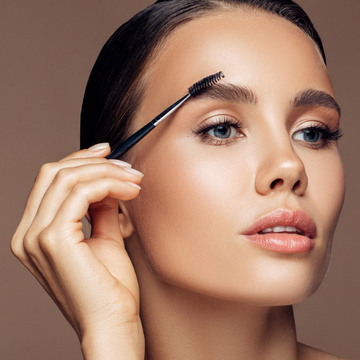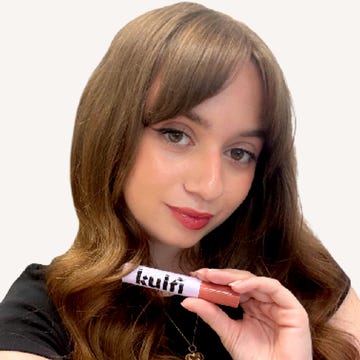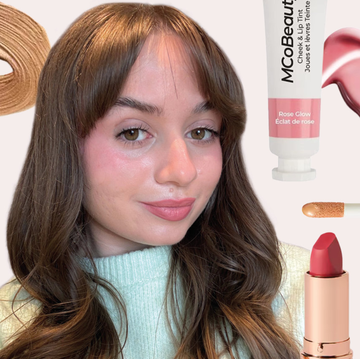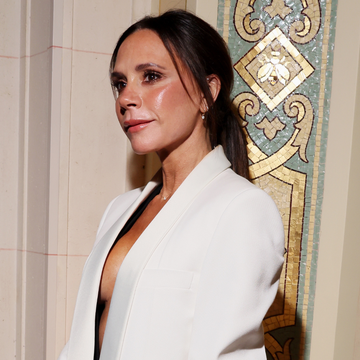We earn a commission for products purchased through some links in this article.
These moisturising primers hold your base AND hydrate your face
Three pro makeup artists share the lesser known benefits of primers for dry skin

In my experience, there are two types of makeup wearers in the world: those who have never felt the need for a primer, and those who absolutely swear by it. Personally, I fall into the latter camp. Primers are so essential to my base routine that the one time I forgot to pack mine for a holiday, I chose to just not wear makeup the entire trip, rather than try to do it primer-less.
To some, that will sound like an unnecessarily drastic solution. But for those of us who can’t live without a primer, that’s entirely down to how versatile it is as a form of skin prep. If you’re not quite clued up, a primer usually comes in gel or moisturiser type consistency, and works to enhance your base by making sure it lasts as long as possible before fading, creasing or separating.
But what makes primers so divisive is that many aren’t aware of their countless benefits, even besides longevity. For dry or mature skin in particular, a good primer will help to keep skin hydrated under foundation (even after hours of wear) and deliver a much needed boost to an otherwise dehydrated or textured complexion. Whatever your skin type, a primer is designed to cover all bases (quite literally) in just seconds – so adding an extra product doesn’t have to mean adopting a whole new routine.
Confused about where to start? Need a little more convincing? We’ve got you. Read on to learn more about the pros of a primer and what to look out for (according to three professional makeup artists), plus our picks of the 10 best hydrating primers for dry skin.
What are the benefits of using a primer?
The biggest question around primers is usually, ‘Do I actually need one?’ According to pro makeup artist SJ Froom, the answer is yes – and even more so if you have dry skin. ‘I always think of it as skincare meeting makeup,’ she says. ‘Your foundation simply performs better with a good primer underneath, as it creates a smooth, hydrated base that helps makeup apply more evenly and last longer.’
And for drier skin types, SJ adds that the right primer can also limit any flaking, prevent makeup from clinging to dry patches and offer a fresher, more radiant finish.
Celebrity makeup artist Hannah Martin – whose clients include Dame Helen Mirren and the Royals – says that the type of primer you choose can have any number of additional skincare benefits. ‘Some primers are designed to alter the finish of the skin, which can also mean colour correcting any redness, or being illuminating, for those who want a hand achieving a natural-looking glow without relying on shimmery makeup.’
How do primers for dry skin differ from others?
For dry skin, the key is maintaining moisture – especially when you’re planning to apply foundation on top. ‘So because primers for dry skin are all about hydration and comfort, they tend to have richer, creamier textures,’ explains SJ.
‘In contrast, primers for oily or combination skin will typically be oil-free, with mattifying or pore-refining benefits.’
Hollie Burke, pro artist at Bobbi Brown, adds that skincare grade ingredients are usually noticeable in these kinds of primers. ‘They typically include nourishing ingredients [more on these below] which also aim to improve both skin health and texture during application.’
What should I look for in a primer, if I have dry skin?
According to both SJ and Hollie, a creamy texture will be the most effective on dry skin. ‘Rich, creamy formulas are ideal as they provide lasting nourishment without being absorbed too quickly by the skin,’ explains Hollie.
SJ adds that a lightweight cream or lotion texture layers well under makeup without feeling heavy. ‘Go for a primer that leaves a dewy, fresh finish – this will bring life back to dry or lacklustre skin and keep it looking healthy throughout the day.’
As for the formula, it’s important to look out for a few skin-loving ingredients in particular, which work to give an extra boost of moisture. ‘A primer whose focus is hydration will likely be full of moistening properties like hyaluronic acid, glycerin, shea butter and oils,’ says Hannah.
SJ also likes botanical oils as a moisturising ingredient, which again, is essential when working with dry skin. ‘And the key for dry skin is to avoid anything too silicone-heavy or mattifying, as this can exacerbate dryness.’
Is it possible to get a primer that gives a blurring effect, but also hydrates?
There are many primers on the market that – with the help of shea butter especially, says Hollie – are able to do both. But according to Hannah, the best option is to pair a quality moisturiser with your primer, as they can work together to achieve both hydration and the desired smoothness.
‘Blurring primers mostly contain tiny spherical silica beads,’ explains Hannah, ‘which sit on the surface of the skin and reflect light. This is what minimises the appearance of pores and fine lines and creates a gentle blurring effect.’
She adds: ‘This effect can sometimes be harder to achieve with hydrating primers as silica naturally absorbs oil and leaves a matte finish.’
So for those who want both, Hannah suggests first hydrating the skin with a good moisturiser, letting it absorb, then following up with a blurring primer of your choice through the T-zone (forehead, nose and chin).
How and when should I apply a primer?
SJ likes to think of primer as the final step in your skincare routine, and the very first step in your makeup (so it should follow your moisturiser and/or SPF).
Hollie recommends using a pea-sized amount of primer, warming it up in your hands first before massaging it into the skin, in the same way you would a face cream.
‘Make sure it’s evenly distributed, and feel free to add a little extra to any areas that need more attention.’ This can be especially drier patches on your face, or areas (for example, around the mouth or under the eyes) where you notice makeup tends to fade faster.
‘But let it settle for a minute before applying foundation, so it has time to bond with your skin,’ warns SJ. ‘Then, with the right primer, your foundation will glide on more effortlessly and stay looking fresh for hours.’


The royally approved secret to Kate’s smokey eye

This is the best clump-free mascara we’ve found

Celebrity MUA reveals best products for pale skin

Brow tinting is the easiest fix for sparse brows.
















